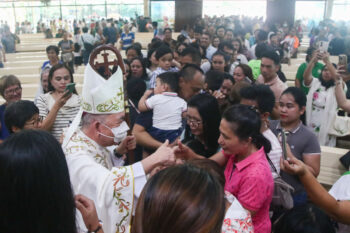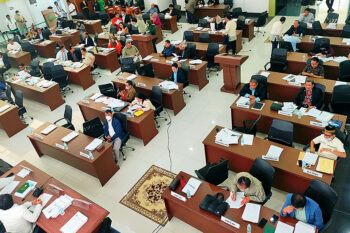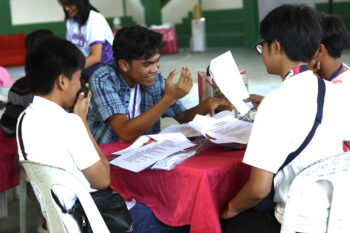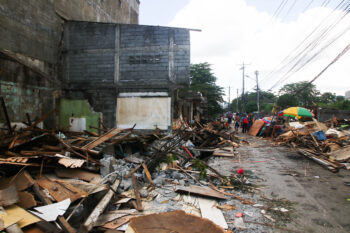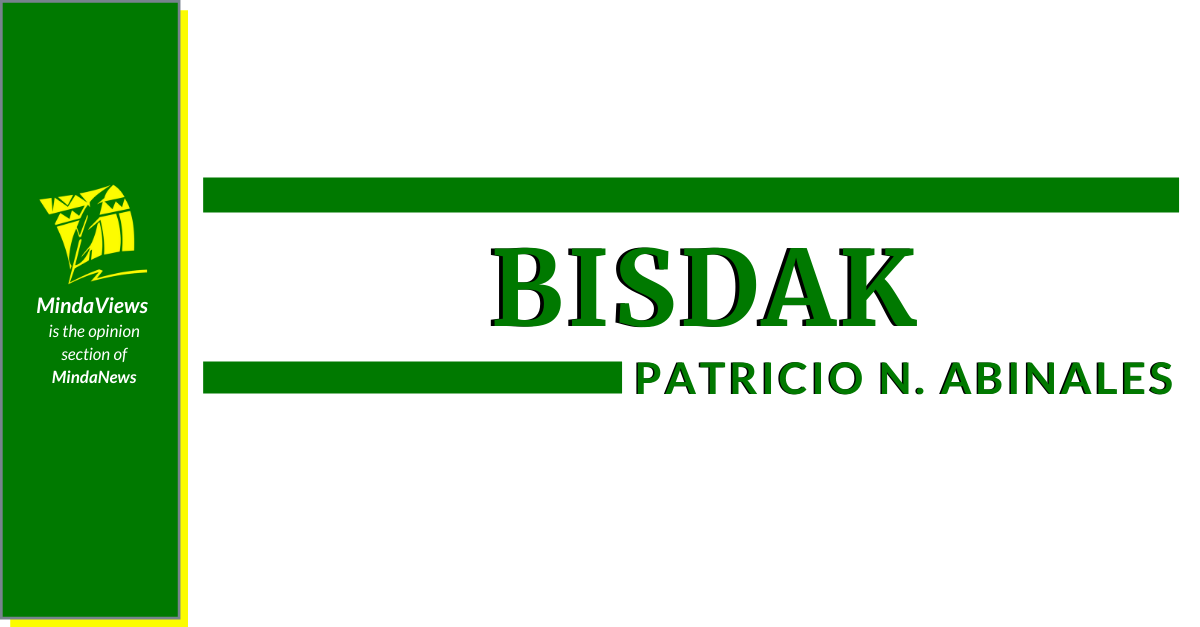
HONOLULU (MindaNews / 21 August) – Carol Arguillas’ straight-forward reportage of the Philippine Book Festival recently held in Davao City elicited yet another irritated response from the local intelligentsia. The spark was in the first three words of the article’s title: “A bit of Mindanao.” You’ve heard the complaints before the little work on Mindanao compared to the rest of the country; Mindanao publishers hardly gave scholars and writers on Mindanao central space, and hardly any books were on display.
Unfortunately, save for the third complaint, this is not anymore true. The record of my favorite academic publisher, the Ateneo de Manila University Press, shows the reverse. Since Dipolognon Maricor Baytion took over the director’s position of the Press and through the terms of Prof. Rica Bolipata and Karina Bolasco, Ateneo has consistently given Mindanao a big chunk of space in its publications programs.
I compiled a list of the Press’ printed books (see Table 1), classifying them by the three general regions and the disciplinal categories. Mindanao studies top the list (33), followed by Luzon (29), and Visayas in a poor third (9). Ateneo Press may be an institution based in the imperial capital. Still, under these three directors, it has made sure that Mindanao studies will not be ignored by academia and the literati. Prof. Bolipata has taken over the director position after Bolasco recently retired, and I am very optimistic that she will continue to devote a large portion of the Press’ resources to publishing works about Mindanao.
Let me break down the listing to prove several points and pinpoint where we have to do more. First, five of the Mindanao books have an island-wide focus: Ediberto Alegre’s Biyaheng Pinoy: A Mindanao Travelogue; Fr. Miguel A. Bernard’s Great Island: Studies in the Exploration and Evangelization of Mindanao; Jowell Canuday and Joselito Sescon edited Transfiguring Mindanao: A Mindanao Reader; Francisco Lara and Steven Schoofs edited Out of the Shadows: Violent Conflict and the Real Economy of Mindanao; and Ricardo de Ungria edited Kalandrakas: Stories and Storytellers of/on Regions in Mindanao, 1890-1990, Volumes 1 and 2.
You cannot find anything comparable published about Luzon and the Visayas Islands in other academic and non-academic presses in the country and even beyond. I wish to emphasize this because if some of the younger scholars and writers in Mindanao and elsewhere aspire to write a story of the island and not just of its constituent parts and communities, these five books will be fantastic foundational readings. The same goes for planning to teach a course in Mindanao. You already have the readings for Part 1 of the introduction in these books. I will go back to teaching later in this essay.
Second, imperial publications describe Mindanao as an economically unexploited, culturally backward frontier and an ungovernable periphery of the nation-state. We know why Manila wants to represent the island in these terms, so there is no need to repeat them here. Four of the Ateneo Press’ books, however, show not only the opposite but that Mindanao, more than the rest of the archipelago, has had these long historical connections with the world: Oliver Charbonneau’s Civilizational Imperatives: Americans, Moros, and the Colonial World; Patricia Dacudao’s, Abaca Frontier: The Socioeconomic and Cultural Transformation of Davao, 1898-1949; Shinzo Hayase’s Mindanao Ethnohistory Beyond Nations. Maguindanao, Sangir, and Bagobo Societies in East Maritime Southeast Asia; and James Warren’s The Sulu Zone, 1768–1898: The Dynamics of External Trade, Slavery, and Ethnicity in the Transformation of a Southeast Asian Maritime State. The significance is worth underscoring here: if we write and teach about Mindanao as part of Southeast Asia and the world capitalist system, and not just some Philippine backwater, think of the many possibilities of developing different analytical threads not tied to the history of the nation-state.
The syllabi our educators will develop will be much richer because the island’s history is not just older than that of “the Philippines” but also much more international. Ultimately, we will have more grounds to argue our Southeast Asian connections to correct this misimpression peddled by many in the imperial capital. We have more affinity to Latin America because of our Spanish colonial heritage. What a great way to upend nationalist history!
Table 1. Rough Listing of Ateneo de Manila University Press by Geographic Region
| Category | Luzon | Visayas | Mindanao |
| Archeology | Stephen Acabado, Antiquity, Archeological Processes, and Highland Adaptation: The Ifugao Rice Terraces | ||
| Cecilia Y. Locsin, et. al. eds. Lemery Archeological Sequence: Lemery, Batangas Vol. 1-2 | |||
| Architecture | Pedro Luengo, The Convents of Manila: Globalized Architecture during the Iberian Union | Erik Akpedonun and Czarina Saloma. Casa Boholana: Vintage Houses of Bohol | |
| Fernando Zialcita et. al., eds. Endangered Splendor: Manila’s Architecture Heritage (1571-1960), Volumes 1-2 | |||
| Arts, Culture, Music | Ediberto Alegre. Biyaheng Pinoy: A Mindanao Travelogue | ||
| Ma. Christine Muyco. Sibod: Ideology and Expressivity in Binanong Dance, Music and Folkways of the Panay, Bukidnon | |||
| Ukkil: Visual Arts of the Sulu Archipelago, Vol. 1-2 | |||
| Manoleta Mora. Myth, Mimesis, and Magic in the Music of the T’boli, Philippines | |||
| Biography, Autobiography | Ma. Virginia Yap Morales. Ascending the Fourth Mountain: A Personal Account of the Marcos Years | ||
| History | Agapito Labalan del Rosario and Rosario Cruz-Lucero. Lost Graves, Found Lives: A History and Memoir | Resil Mojares, War Against the Americans: Resistance and Collaboration in Cebu, 1899-1906 | Michael Mastura. The Rulers of Magindanao in Modern History, 1515-1903 |
| Michael Pante. A Capital City at the Margins | Michael Cullinane. Areas of Conspiracy and Rebellion in the Late Nineteenth Century Philippines: The Case of the April 1989 Uprising in Cebu | Patricia Dacudao. Abaca Frontier: The Socioeconomic and Cultural Transformation of Davao, 1898-1949 | |
| Daniel Doeppers. Feeding Manila in Peace and War, 1850-1945 | Thomas McKenna. Moro Warrior: A Philippine Chieftain, an American Schoolmaster, and the Untold Story of the Most Remarkable Resistance Fighters of the Pacific War | ||
| Josefina Dalupina Hofilena. Ateneo de Manila University: 150 Years of Engaging the Nation | Jowell Canuday and Joselito Sescon. Transfiguring Mindanao: A Mindanao Reader | ||
| Nicanor Tiongson. Women of Malolos | James Warren. The Sulu Zone, 1768–1898: The Dynamics of External Trade, Slavery, and Ethnicity in the Transformation of a Southeast Asian Maritime State | ||
| Motoe Terami-Wada. Sakdalistas Struggle for Independence, 1930-1945 | Oliver Charbonneau. Civilizational Imperatives: Americans, Moros, and the Colonial World | ||
| Paul Dumol. Manila Synod of 1582: The Draft of Its Handbook for Confessors Translated into English | Miguel A. Bernad. Grand Island: Studies in the Exploration and Evangelization of Mindanao | ||
| Christine Montiel et. a;l., Down from the Hill | Patricio N. Abinales. Orthodoxy and History in the Muslim Mindanao Narrative | ||
| Language and Literary Criticism | Roderick G. Galam. The Promise of the Nation: Gender, History, and Nationalism in Contemporary Ilokano Literature | Merlie M. Alunan (ed) Susumaton: Oral Narratives of Leyte | Gerard Rixhon. Voices from Sulu: A Collection of Tausug Oral Traditions |
| Literature | Raniela E. Barbaza. Mga Obispo ni Ana T. Calixto: Paggigiit ng Sadiring Banwa sa Osipon, Maikling Kathang Bikol, 1950-1956 | Rudy Villanueva. The Vicente Rama Reader: An Introduction for Modern Readers | Ricardo de Ungria. Kalandrakas: Stories and Storytellers of/on Regions in Mindanao, 1890-1990, Volumes 1-2 |
| Christine S. Bellen. Batang Rizal at Iba Pang Dula | Erlinda K. Alburo et. al., Sugilanong Sugbuanon, Vols. 1-2 | Simeon DumDum, Jr. Marawi and Other Poems | |
| Priscelina Legasto. Sarswelang Pangasinan. Vols. 1-3 | Ma. Cecilia Locsin-Nava. Margosatubig: The Story of Salagunting (translated from Hiligaynon) | Patricia Laurel. Dapitan Schoolboy: A Novel | |
| Rolando B. Tolentino and Aristotle Atienza. Eds. Dagling Tagalog, 1903-1936 | H. Arlo Nimmo. Very Far Place: Tales of Tawi-Tawi | ||
| Domingo Landicho. Bulaklak ng Maynila | H. Arlo Nimmo. The Songs of Salanda and Other Stories of Sulu | ||
| Politics | Benedict Tria Kerklviet. Everyday Politics: Class and Status Relations in a Central Luzon Village | Robin Thiers. Tales of the Post-Plantations | |
| Wilfrido Torres. Rido: Clan Feuding and Conflict Management in Mindanao | |||
| Patricio Abinales. Making Mindanao: Cotabato and Davao in the Formation of the Philippine Nation-State | |||
| Francisco Lara. Insurgents, Clans, and States: Political Legitimacy and Resurgent Conflict in Muslim Mindanao, Philippines | |||
| STEM | Denys J. Snelder and Eileen Bernardo (eds). Comanagement in Practice: The Challenges and Complexities of Implementation in the Northern Sierra Madre Mountain Region | ||
| Sociology and Anthropology | Shimizu Hiromu. Grassroots Global-ization: Reforestation and Cultural Revitalization in the Philippine Cordilleras | Julius Bautista. Figuring Cathol-icism: An Ethno-history of the Santo Niño de Cebu | Virginia Villanueva. Tales from the Southern Kingdom |
| Remmon E. Barbaza. Making Sense of the City: Public Spaces in the Philippines | Filomeno Aguilar, Jr. Clash of Spirits: The History of Power and Sugar Planter Hegemony on a Visayan Island | Francisco Lara and Steven Schoofs. Eds. Out of the Shadows: Violent Conflict and the Real Economy of Mindanao | |
| Roderick G. Galam. Women Who Stay: Seafaring and Subjectification in an Ilocos Town | Jowell Canuday. Bakwit: The Power of the Displaced | ||
| Gaston P. Kibiten. The Politics of Clan Reunions: Ritual Kinship and Cultural Transformation among Kankaneys of Northern Luzon | Stuart A. Schlegel. Wisdom of the Forest: The Spiritual Journey of an Anthropologist | ||
| Patricia Mejia. Peasants, Merchants, and Politicians in Tobacco Production: Philippine Social Relations in a Global Economy | Ronald Edgerton. People of the Middle Ground: A Century of Conflict and Central Mindanao, 1880-1980s | ||
| Wolfram Heinz Dressler. Old Thoughts in New Ideas: State Conservation Measures, Development and Livelihood on Palawan Islands. | Shinzo Hayase. Mindanao Ethnohistory Beyond Nations. Maguindanao, Sangir and Bagobo Societies in East Maritime Southeast Asia | ||
| James Eder. Generation Later: Household Strategies and Economic Changes in the Rural Philippine | Karl Gaspar. Manobo Dreams in Arakan: A People’s Struggle to Keep Their Homeland | ||
| Thomas Gibson. Sacrifice and Sharing in the Philippine Highlands: Religion and Society among the Buid of Mindoro | Bienvenido Nebres. Managing Conflict, Building Consensus: The Xavier University Housing Project | ||
| James Eder and Oscar Evangelista. Palawan and its Global Connections | Albert Alejo. Generating Energies in Mount Apo: Cultural Politics in a Contested Environment | ||
| Bruno Bottignolo. Celebrations with the Sun: An Overview of Religious Phenomena among the Badjao | |||
| Total | 29 | 9 | 33 |
(To be continued)
[MindaViews is the opinion section of MindaNews. Patricio N. Abinales, an Ozamiznon, teaches at the University of Hawaii-Manoa. He studies the four-legged rat (a pestilence that brought famine in many parts of postwar Mindanao) and the two-legged rat (the politico)]


